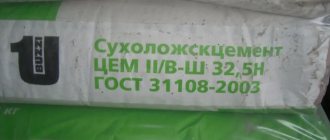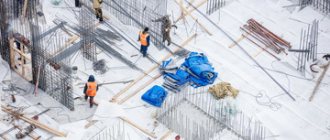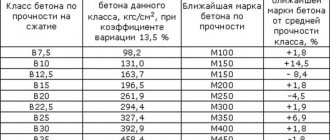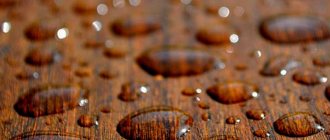What is cement?
Cement and concrete: what is the difference? If you are interested in the answer to this question, then it is worth considering each substance separately. Cement refers to a dry substance that acts as a binder in the manufacture of cement and concrete mortars.
Cement mortar is a composition that includes 3 main components. These are cement, sand and water. In addition, various regulating additives are usually added here, which increase strength, resistance to temperatures, and moisture.
Preparation of sand concrete
An experienced builder is able to prepare this composition independently. For this you will need water, sand and Portland cement M 500. The proportions are simple - 3.5 kg of cement and no more than 2.5 liters of water are needed per bucket of sand.
The consumption of the prepared mixture is determined by the following conditions:
- required thickness;
- base parameters;
- high-quality condition of the finishing coating.
If a concrete mixer is used, the components must be dry so that they mix well.
Having laid the sand, add cement, stir and pour in water. The material will be homogeneous and will meet the strength requirements of M 300. The mixture is kneaded for several minutes, then sent to work.
Kawabanga! Density of different types of concrete in kg/m3
The brand of Portland cement used affects the strength of the sand concrete mass, and the sand fractions determine the degree of shrinkage. A universal option is composition M 300, although in practice it has been proven that low-grade solutions can also be used.
Transportation and storage of such material is carried out in four-layer paper containers that reliably protect from moisture.
Distinctive properties of cement mortar according to purpose
If we talk about its purpose, cement mortar usually acts as a screed for floor coverings such as laminate, parquet, linoleum and much more. Very often, it is used to seal various seams between slabs and blocks. In addition, the composition is used for plastering of many surfaces. This allows you to give them an attractive appearance and compact the surface.
Unlike concrete mortar, the cement component does not require the introduction of coarse aggregate. Here you will get by just fine with regular sand. Very often you can see a plasticizer in the list of additives. It improves the mobility of the solution and increases its strength. And if you do not want to purchase a purchased version of the solution, you can make it yourself. Here you need to adhere to a certain regulatory document and study in advance the difference between concrete and cement.
Composition of cement mortar
The composition of the solutions can be:
- Cement.
- Limestone.
- Cement-lime.
In addition, experienced craftsmen also resort to various additives. Among them are slag, silica, ash and limestone. These admixtures make it possible to improve the quality of finished mixtures. They increase ductility, hardening speed, service life, as well as resistance to various mechanical and chemical influences.
Some differences in concrete mixtures in composition
Concrete composite consists of the following components:
- A binder that is most often used in the form of cement.
- Various types of sand.
- Crushed stone or gravel.
- Water.
- It is possible to introduce various additives.
In this case, the cement is selected of a specific type. But in most cases they resort to the PC500 brand. It is perfect for various designs. To find out how much cement a cube of concrete contains, it is worth making the necessary calculation.
If we talk about crushed stone and sand, then it is worth remembering the granulometric composition, because the characteristics of strength and density will depend on it. When a concrete mixture is prepared at a factory, all parameters and characteristics of each component are immediately taken into account. After all, the correct choice of fillers and binders can improve the workability of the mixture.
When you make the solution yourself, many inexperienced builders do it by eye. In doing so, they miss out on possible performance increases.
Apply the mixture
The technology for producing cement-based self-leveling floors is quite simple and involves the following sequential steps:
- When the mixture is ready, cover the room sequentially, starting from the far corner. Operations are best performed with the help of several assistants. You can level the surface with a notched trowel and roller. At the same time, it also removes excess air from the structure of the cement screed. Special needle walkers are used as shoes, which do not harm the material.
By the way! It will be interesting to know: Making your own stairs to the second floor from wood
You can walk on this floor within a day. Although the drying time depends on the thickness of the layer and the composition of the product. Specific characteristics can be found on the solution packaging.
How to fill a self-leveling floor, see the following video.
Application of additional components
In addition, many now use various plasticizers. They make it possible to improve strength, increase ductility, and also increase resistance to exposure to the atmosphere. In addition to plasticizers, today there are various additives that increase frost resistance, increase density, and accelerate hardening. All of them are freely available at any hardware store, so anyone can purchase them. You should use them only according to the instructions and do not overdo the proportions. This can only lead to negative effects.
Additives in the form of reinforcing fibers
In order to make concrete stronger, various admixtures are often used. This may include:
- Metal threads.
- Fiberglass.
- Polymer threads.
- Basalt fiber.
The last option is best used because it does not rot, is resistant to fires, and also has good strength. When adding such components, the concrete mixture must be carefully mixed to avoid uneven distribution.
What are the different types of concrete?
If you don’t know the difference between concrete and cement, then it’s worth considering the main classifications. Concrete can be distinguished using many criteria, but among the main ones are the following.
Depending on the mass, concrete can be:
- Easy.
- Lightweight.
- Particularly light.
- Heavy and especially heavy.
According to their intended purpose, concretes are:
- Special. They can be resistant to various chemical influences, radio radiation, low as well as high temperatures.
- Constructive. Typically, such concrete is developed for the manufacture of various structures.
- Straining. This type is used in conjunction with prestressing reinforcement.
According to the type of binder concrete, they can be as follows:
- Cement. Cement is used as a binder.
- Silicate. Lime raw materials and silicate materials are used here.
- Plaster. Concrete is produced from slag materials with the addition of various gypsum binders.
Relationship between materials
Improvement in concrete preparation technology directly depends on cement.
The main component of concrete is cement. The connection between them is as follows: the higher the adhesive ability of cement, the stronger the concrete will be.
In the manufacture of concrete and reinforced concrete structures, various cements are used. They are selected based on the type of structure for which concrete will be used. The price of concrete will depend on what brand of cement it is.
The grade of cement is selected depending on the grade of concrete in terms of compressive strength:
| Concrete grades | M150 | M200 | M250 | M300 | M350 | M400 | M450 | M500 | M600 and above |
| Cement brands | M300 | M300 M400 | M400 | M400 M500 | M400 M500 | M500 M600 | M550 M600 | M600 | M600 |
Kawabanga! Reinforcement in concrete; preparation for the creation of reinforced concrete and functions
If the grade of cement is higher than that recommended for a given concrete, it is necessary to dilute it with a finely ground active additive in order to avoid excess consumption of material.
What is the difference?
In the case when you do not know how concrete differs from cement, then it is worth making a final conclusion and summing up in detail:
- Application. It is worth remembering that concrete and cement will differ in application. Concrete has a wider range of applications in which it can be used. It is used in all construction processes. And if we talk about the cement composition, it is used for finishing work, sealing various cracks and depressions, as well as for laying building materials.
- Compound. The cement composition has quite a few components, which reduces its strength in comparison with concrete mortar. Includes concrete and cement, and crushed stone, and sand. It also tolerates the introduction of various additives in the form of liquid components or reinforcing fibers. In addition, concrete is used to make a building component such as reinforced concrete, which is used everywhere for housing construction.
- Decorative properties. If we talk about finishing facades, then only a monolithic wall can be made using concrete. Next, it needs careful finishing, even with ordinary cement mortar. Concrete cannot be used as a finishing material. It has quite a lot of depressions, chips, cracks, as well as oil stains from the formwork. That is why it always needs to be trimmed. The cement mortar is applied quite simply and can eliminate all visible defects.
- Life time. If you don’t know how concrete differs from cement, then you should immediately remember this particular feature. It is worth knowing that concrete will only gain strength every year. It will withstand all negative loads and impacts, therefore it is an excellent material for constructing a foundation. Cement mortar, no matter what its quality, will eventually begin to crack, crumble and become unusable. That is why concrete will be better in this regard.
- Price. When it comes to cost, concrete will be more expensive. This is due to the fact that it contains a larger number of components, which immediately makes it more expensive.
- Consistency. In the cement mortar you will observe a fairly dense and uniform consistency. Concrete cannot boast of this, because it contains coarse aggregate.
- Workability. Due to the fact that the cement mortar contains only fine aggregate, it will be more convenient to install. If we talk about concrete, then again it will lag a little behind. In the event that gravel or crushed stone is selected with the wrong granulometric composition, and compaction is carried out incorrectly, this can lead to the formation of voids.
Mortar for grouting plaster. Subtleties of surface cleaning.
How to rub plaster in a circle.
You need to take a plaster trowel, press it firmly against the canvas and perform circular gestures counterclockwise. With this method, the side surface cuts off all the bulges, while simultaneously filling the depressions with the removed solution.
By the way! It will be interesting to know: Pouring a foundation without formwork
The pressure on the grater depends on the quality of the cloth. On the tubercles it should be a little stronger, on the site of the pits it should be weaker.
The mortar that will collect on the sides should be removed periodically and used to fill deep depressions and chips.
Processing plaster with a float is a rather long and painstaking procedure. Over time, the canvas will dry out, making it difficult to grout the plaster. The work will go much faster and easier if the wall is periodically moistened with water.
The “matching” method: distinctive features and advantages.
This option is used to achieve a perfectly flat surface, which is planned to be painted in the future. Performed in reciprocating steps. It must be thoroughly cleaned of any remaining solution.
The surface will be smoother if you rub it over a damp base. Moreover, it is better to do this in small “pieces”, immediately after grouting in a circle.
The “matching” method involves the use of several types of tools. A sponge trowel for plaster is used at the initial stage of work. To achieve a mirror effect, you need to take a metal version.











